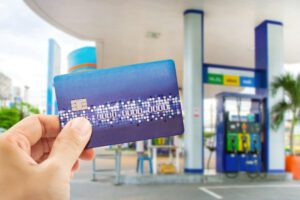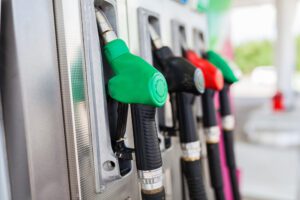Have you made the switch to EMV technology at your fuel pumps and inside your convenience stores yet? Or, are you among the many that have not yet tackled this daunting task? Across the nation, gas stations and c-stores are last industry to adopt this technology.
 Russ Haecker, EMV business manager at Dover Fueling Solutions (DFS) estimates that there are more than 350,000 dispensers in the US that still need to be upgraded to EMV technology at their gas stations.
Russ Haecker, EMV business manager at Dover Fueling Solutions (DFS) estimates that there are more than 350,000 dispensers in the US that still need to be upgraded to EMV technology at their gas stations.
With the extended deadline for compliance approaching in October of 2020, business owners will have a tough decision to face: comply with EMV and upgrade their technology, or continue operating as-is and risk being liable for fraudulent charges.
Pros of Compliance
Decreased liability
Once the liability shift occurs, business owners will be responsible for fraudulent charges at their gas pumps and convenience stores that come from stolen credit cards. EMV chip cards greatly decrease your liability risks and protect both you and your customers against fraud. When fraudulent charges occur at gas stations and c-stores without EMV, that business and that business alone is liable.
Reduced risk
Criminals always go for the easiest targets. Ever since EMV has made it more difficult to carry out card-present fraudulent activities, criminals have turned to the path of least resistance, such as e-commerce and businesses that haven’t adopted EMV payment technology yet. C-stores and gas stations are a prime target, but EMV compliance reduces that risk.
Increased security
Customers are used to EMV in stores, and by now, most of them are aware that EMV protects them from fraudulent charges. If your store doesn’t offer EMV, they will notice, and may think twice about coming back. Customers expect a certain level of security from all stores, so non-compliance could hurt your loyalty.
Cons of Compliance
Costly initial investment
There is no way to get around it—upgrading your technology is going to cost you. You are going to end up paying either way—either with chargebacks and fines, or upgrades to your technology.
Disruptive to business
Installing EMV card readers into your fuel pumps may not be a simple process. There are a limited number of companies that can do the install. Sometimes it means digging up lines and making it inconvenient to customers. This is only temporary, but it could still be something to take into consideration. Would it hurt your reputation more to be the victim of credit card fraud, or to disrupt business momentarily while you upgrade your payment security?
Changing technology
What happens when all the pumps are switched to gas station EMV, and then in 5 years, some new payment technology emerges? Some C-store and gas station owners are waiting it out to see if the technology lasts. This may sound like a tempting option. If you do choose to upgrade, you’d want to go with a provider that continues developing solutions as needs arise, so future forms of payment technology can be integrated without having to completely overhaul your system every time trends change.
Making the EMV Switch
Switching to EMV is not an easy task. There are advantages and disadvantages to both options. It’s up to each  individual business owner to weigh the pros and cons and decide for themselves whether it’s better to bite the bullet and upgrade, or continue risking fraud and chargebacks.
individual business owner to weigh the pros and cons and decide for themselves whether it’s better to bite the bullet and upgrade, or continue risking fraud and chargebacks.
Still not sure what the best option is? The industry experts at Mainstreet can help you navigate the complicated world of available technology and determine the best option for your c-store or gas station. For more information, contact Mainstreet today.